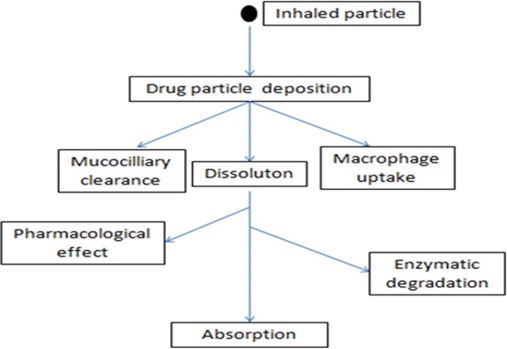Abstract
Pulmonary diseases are one of the significant conditions and influence the lifestyle for a majority of the population in today’s world. From ancient times, inhalational drug delivery is being utilised to target the lungs for the management and treatment of pulmonary diseases with reduced side effects. Factors like the physiology of the respiratory system, selection of devices, particle characteristics, and formulation characteristics affect the efficiency of inhalational drug delivery. The precise usage of the inhaler device is indispensable for the efficient delivery of drugs. The characteristic particle impacts the region of drug deposition and in turn influences drug dissolution. Drug dissolution is also affected by the physiological aspect of the respiratory tract, which is concerned primarily in disease states. Formulation type and characteristics decide the release mechanism and influences the inhalational pattern. Liposomes, nanoparticles, microparticles, micelles, dendrimers, etc. can be utilised for passive and active targeting of drugs to the lungs. Inhalational drug delivery can be harnessed to deliver therapeutic agents to systemic circulation for diseases apart from pulmonary diseases. The inhalational drug delivery techniques and devices are being continuously researched upon and reworked to acquire better drug loading with minor loss during drug delivery. The review focuses on the significance and factors associated with pulmonary drug delivery.
Full text article
Authors

This work is licensed under a Creative Commons Attribution-NonCommercial-NoDerivatives 4.0 International License.

